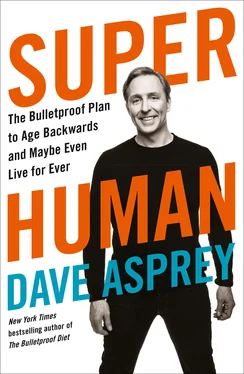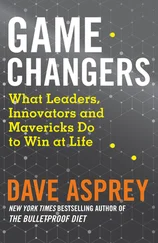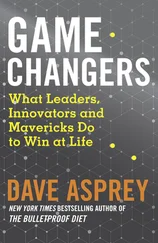For about six weeks as a vegan, I felt great and grew convinced that my diet was the answer to all my problems. I had tons of energy and no idea it was the energy of a stressed animal that is starving and needs one last boost to catch its prey. Already convinced that being a vegan gave me more energy, I logically decided to “lean in” when I started to feel the ill effects. That is why it’s a trap—once you’re convinced that you feel good on a vegan diet (because you actually did for a short while), you don’t think to look at your diet when your energy or your health begin to suffer.
Thankfully, it took me only about six months to realize what was going on, do more research, and decide to add meat back into my diet. By then I had learned about the dangers of consuming AGEs when eating overcooked meat, so for a brief period of time I became a raw omnivore. In addition to occasionally eating sushi, I marinated thin strips of steak in apple cider vinegar to kill harmful bacteria and added it to my salads. With that plus some raw egg yolks and raw butter, I started to feel better right away.
When I reread The China Study , I realized it had some serious flaws. For example, the researchers conclude that all animal protein causes cancer simply because rats that were exposed to large amounts of casein (a dairy protein, one of thousands of animal proteins that each do different things) had a higher chance of developing liver cancer than rats that did not consume casein. But the study didn’t account for the type of animal product or the type of animal; nor did it consider what that animal ate or how the meat was stored or cooked. These factors truly determine whether or not an animal product is aging. So does the amount of meat you eat. If you want to live a long time, you want to avoid eating too much meat and avoid eating all low quality meat.
My time as a raw vegan was not fun, but I am grateful for The China Study . Had I not cut out animal protein from my diet, I wouldn’t have become familiar with the research showing that most of us—including me before I went vegan—eat far too much protein in general. Eating a pound of steak or chicken every day has a different impact from eating a few ounces, which in turn has a different impact from eating none at all.
After I started eating meat again, I wondered why my inflammation levels had decreased when I cut out animal products. It turns out excess protein—especially from animals—causes inflammation. Most animal protein contains specific amino acids such as methionine, which causes inflammation and aging when eaten in excess. (Except for collagen protein, which has far less methionine.) In pharmaceutical studies, this is called an inverted U-shaped response curve. It means there is a “Goldilocks zone” for dosing a substance, and either too little or too much does not work.
This is no small consideration. When you eat a diet high in animal protein, you can expect a 75 percent increased risk of dying from all causes over eighteen years, a 400 percent increased risk of dying of cancer, and a 500 percent increased risk of diabetes compared to someone who restricts his or her animal protein. 11Totally not Super Human. Another set of studies found that restricting protein can help increase maximum life-span by 20 percent, probably because less protein means less methionine. 12
The type of protein you eat is as important to consider as how much protein you eat. If the protein in question is charred or deep-fried, there is no good amount to eat. Same goes if it’s from industrially-raised animals treated with antibiotics. But if the protein is from gently cooked grass-fed animals, wild fish, or plants (hemp is best), then there is a simple formula for the correct daily allowance: about 0.5 grams per pound of body weight for lean people; and about 0.6 grams per pound for athletes, older people (the risks associated with overconsumption of protein decrease after age sixty-five), and pregnant women.
If you’re obese like I was, sorry, but all that extra fat you’re carrying around doesn’t require protein, so subtract it from your body weight before figuring out how much protein to eat. For instance, when I weighed 300 pounds, let’s assume I was carrying an extra 100 pounds of fat. Take my weight (300), subtract my fat (100), and you end up with 200 pounds, so I should have aimed to eat 100 grams of protein (0.5 × 200 pounds). If you’re relatively heavy and have no idea of your body fat percentage or are just bad at math, assume you’re about 30 percent fat. So you’d eat 0.35 grams per pound of body weight.
Collagen protein is a special case. Given that it lacks the most aging amino acids and has all sorts of benefits for connective tissue, you can add another 20 or more grams of grass-fed collagen on top of your protein intake or use it as part of that number. Some days up to 50 percent of my protein comes from Bulletproof collagen.
Eating less protein will not give you less energy. Contrary to everything you’ve heard from most popular diets (even keto), protein is actually a terrible last-ditch fuel source for humans, worse than fat or carbohydrates. The process of turning amino acids from protein into energy creates a lot more waste than fat or carbs, and excess protein ferments in the gut and produces ammonia and nitrogen. This puts a huge load on the kidneys and liver. Instead of getting energy from protein, you want to consume just enough protein as building blocks to repair your tissues and maintain muscle mass, and then get energy from fat, fiber, and a few carbs, instead.
When you get this right, your cells can rebuild themselves with clean animal fats and protein (notice, you’re an animal, too), and your gut bacteria will actually transform fiber from vegetables into fatty acids, an ideal fuel source for your mitochondria. Add in excess protein, antibiotic-contaminated meat, and/or sugar, and your gut bacteria just won’t do the same thing.
Restricting protein intake also helps boost autophagy, your all-important cellular recycling program. By occasionally limiting how much protein you eat (you can still have a nice steak every once in a while), you force your cells to find every possible way to recycle proteins. In their search, they excrete waste products hiding in your cells, slowing down energy production. Temporary protein deficiency is a type of hormetic (beneficial) stress. In response to protein restriction, your body looks for other sources of energy. It is the equivalent of burning your trash to stay warm.
The same thing happens when you use intermittent fasting (simply eating all of your food within a shortened period of the day, usually between six to eight hours) as a type of hormetic stress. Intermittent fasting is incredibly useful in aiding fat loss, preventing cancer, building muscle, and increasing resilience. Done correctly, it’s one of the most painless high-impact ways to live longer.
Until recently, we did not fully understand why fasting was so beneficial. Then in 2019, scientists at the Okinawa Institute of Science and Technology discovered that just fifty-eight hours of fasting dramatically increases levels of forty-four different metabolites, including thirty that were previously unrecognized. 13Among other beneficial functions, these metabolites—substances formed during chemical processes—boost antioxidant levels in the body. And as we know, antioxidants are important for fighting off aging free radicals. All of these benefits can be explained by the fact that fasting dramatically boosts autophagy, 14keeping your cells young and healthy.
Fasting has profound effects, even at less than fifty-eight hours. Alternative day fasting, a form of intermittent fasting in which you eat every other day, helps prevent chronic disease and reduce triglyceride and low-density lipoprotein (LDL) cholesterol levels in as little as eight weeks. 15Intermittent fasting also increases your brain’s ability to grow and evolve by boosting neuronal plasticity (the brain’s ability to change throughout your life) and neurogenesis (the birth of new neurons). 16This can help ward off Alzheimer’s and cognitive decline.
Читать дальше






